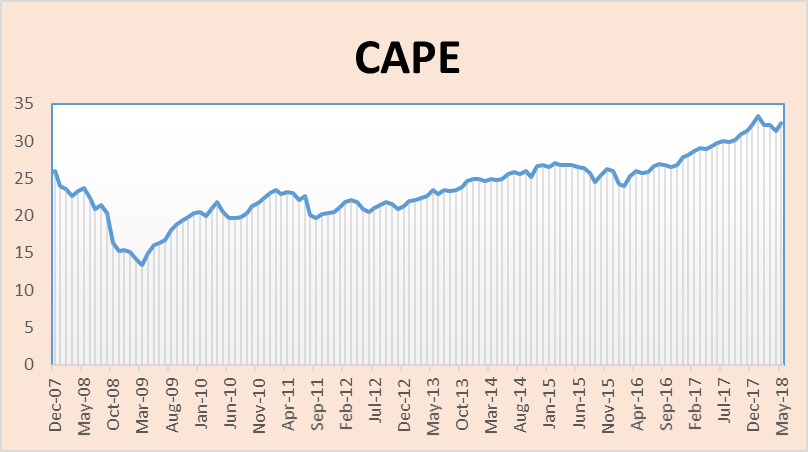CAPE
- Soham Mukherjee
- Jun 2, 2018
- 2 min read

1) CAPE stands for Cycle Adjusted Price Earnings ratio. As the name suggests, it is an adjustment to the highly popular and ubiquitous Price to Earnings ratio.
2) It was invented by American economist and noble prize winner Robert Schiller who is famous not only for his academics but also for successfully predicting the past 2 financial bubbles. (the dot com bubble in 2001 and the housing bubble in 2007)
3) The difference between PE and CAPE lies in the denominator of the ratios. While the PE typically uses the trailing 1-year earnings of the company, the CAPE takes the average of 10 years of earnings and normalizes it for inflation.
4) This is not a relatively new concept. In the 1934 book “Security Analysis”, authors Graham and Dodd suggested that for valuation, one should use an average of earnings spread out over multiple years.
5) The proponents of the CAPE argue that by taking the long term view over earnings, CAPE discounts for cyclical factors, economic factors or business cycles which may artificially push a company’s earnings very high only to come crashing down in periods of depression or slow growth In that sense, it addresses the volatility factor of earnings.
6) The critics argue that at the end of the day, the CAPE is a backward looking measure and moves in tandem with the PE ratio. Hence, it does not offer anything new.
7) Another major criticism lies in the fact that the CAPE uses GAAP (Generally Accepted Accounting Principles) earnings, looking at it over as a period of 10 years. However, GAAP earnings have undergone various forms of changes over the past 10 years, making the measure an inaccurate representation of reality.

*monthly cape






댓글